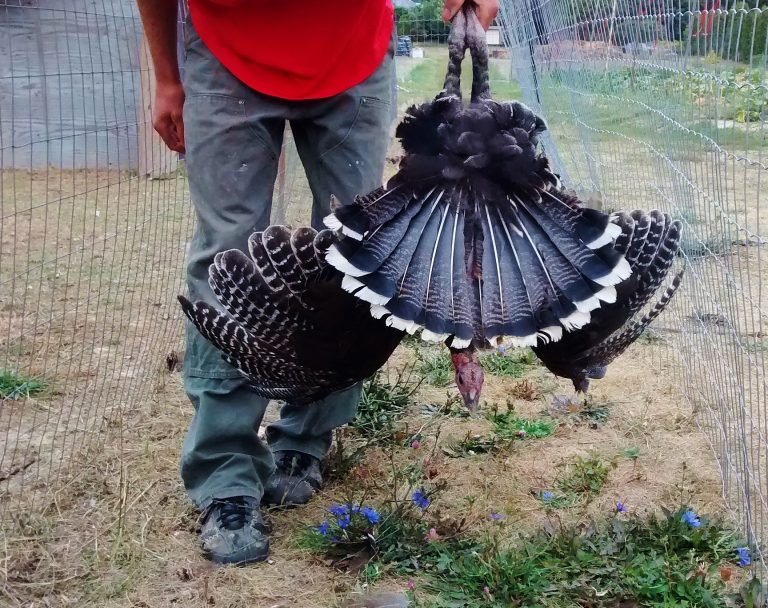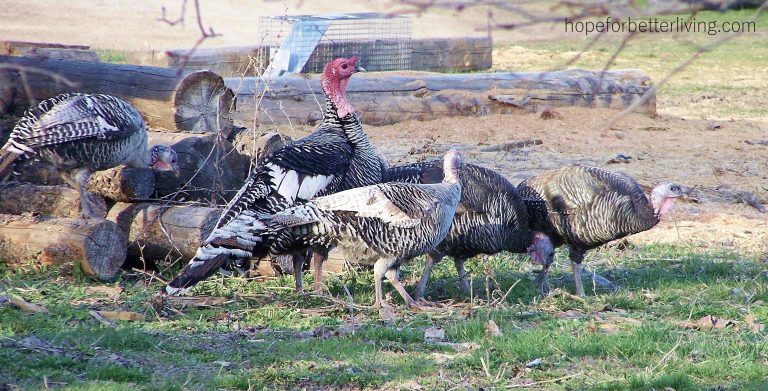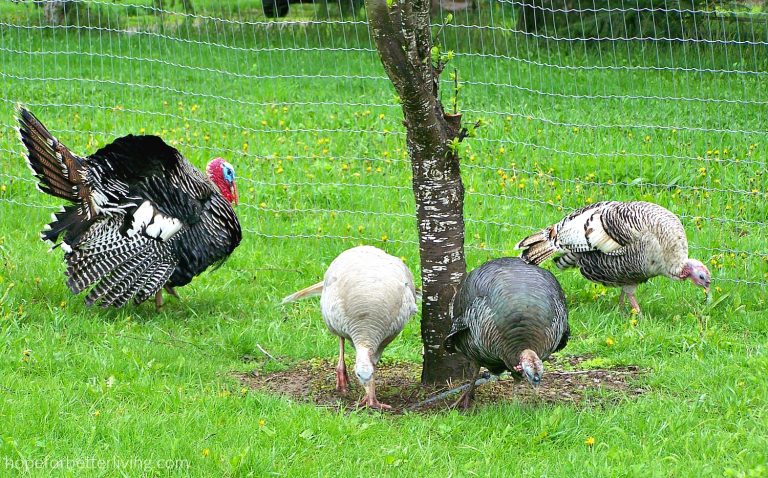How to Clean & Use Old Hens
Discover the benefits of butchering old laying hens, the setup you need to process these tough old birds and how to prepare the meat so it's tender and edible.

Chickens are popular in most backyard homestead circles. They're quirky, fun to have and chickens are a wonderful way to teach children about work and responsibility.
But even the best breeds don't lay eggs indefinitely. Hybrid layers only produce well for 3 years. Heritage breeds will regularly produce for about 5 years.
After this, egg production slows and will eventually stop.
The backyard bird owner is faced with a dilemma: what are they going to do with old laying hens?
It's hard to butcher birds you've cared for. But fact is, they are going to die. The average lifespan of a chicken is about 6-8 years.
Today, I want to convince you use old laying hens to serve your family one last time.
3 Reasons You Should Learn How to Clean and Use Old Hens
Old laying hens are tough, but the meat is packed with flavor. When properly handled, meat from old hens can help feed your family.
1. Old Hens Are A Healthy Meat Source
If you butcher laying hens before they get old and sick, the meat is an excellent source of protein. Compared to chicken you buy at the grocery store, your hens are more likely to be loaded with good collagen, fats, vitamins, and minerals too.
2. The Meat Will Help You Save on Groceries
While old hens are too tough for roasting or frying, the meat can be stewed, pressure cooked or pressure canned to tenderize it. You can even make your own chicken burger!
Think about it. Meat isn't cheap and if you learn how to butcher old laying hens, you'll have lots of quality meat at your fingertips.
Between feed, shelter and fencing, we've all put enough money into our laying hens! Why not reap the full reward of our money and time?
3. Meat from Old Hens Can Be Used in Most Recipes
Tough meat from old laying hens can be cooked in a way that makes it usable in most recipes.
After slow cooking, stewing, pressure cooking or canning, meat will fall off the bone and taste amazing in your favorite chicken dish!

How to Process a Chicken
Here you'll find directions for butchering and skinning old laying hens. Unlike young broilers, old laying hens won't be roasted or pan fried. This actually makes processing easy, because you can skip plucking feathers.
Equipment & Setup for Killing Old Hens
Don't bother plucking old laying hens. The only methods suitable for cooking these birds involve high heat and high moisture. Skinning saves time, and that's what you'll learn how to do here.
To butcher and skin old hens, you'll need:
- a slaughter station (however you like to do it)
- sharp knife
- strong overhead beam or bar for hanging chickens
- two pieces of twine or small rope to loop over the chicken's feet
- a tarp underneath the skinning station to catch feathers and feet
Step 1: Slaughter the Bird
If you keep chickens, I assume you've butchered before and know which technique suits you best: the block, cone, or piercing.
After slaughtering, let the bird bleed out. Once the nerves have relaxed, it's time to hang your bird for skinning.
Step 2: Hang the Bird for Skinning
Hang whole birds by the feet, with innards intact. We like to space two strings or baling twine 8-10 inches apart.
Form a slipknot and slip a chickens foot into each string, pulling downward to tighten the knot.
Step 3: Remove Feathers Around the Leg Shank
Quickly pluck dry feathers away from the top of the bird's leg or shank, so a bit of bare skin is exposed.
Step 4: Skinning a Chicken
- Take a sharp knife and cut skin free around the scaly leg.
- Hook your finger into the space on the breast side, and pull down.
- Skin will peel down the front like a sock.
- Peel the back skin down as well.
- Cut off the head, wings and tail (the tail isn't worth skinning).
Helpful tip: this works best while the chicken's skin is still very warm, so it will peel easier. Work in batches, so you always have warm chickens to work with.
Step 5: Clean Your Chicken
If you've ever cleaned a chicken, you know how to remove the crop, cut a chicken open at the back and pull out innards.
Remove guts from a skinned chicken just like a plucked chicken. Only take more care with the meat, because it doesn't have a skin to protect it.
You can cook the meat immediately or preserve it for later.
How to Cook an Old Hen
The best way to cook a tough old bird is:
- Slow cook in a crockpot or instant pot with lots of liquid.
- Pressure cook a whole bird (you can also use an instant pot for this).
- Cover and boil old hens for 6 hours or until meat falls from the bones.
How to Preserve Meat from Old Birds
I usually freeze old laying hens on butchering day, so I don't have to deal with all the meat immediately!
- Freeze whole, raw birds until ready to cook (bag and freeze old hens just like roasting birds)
- Cook meat, debone and freeze in plastic bags
- Make chicken burger at home (be sure to save the bones for making broth!)
- Start canning old hens in a pressure canner
Helpful tip: if you decide to cut meat away from the bones for making ground chicken, canning or freezing, be sure to save the bones and carcass. They make deliciously flavorful bone broth!
Best Ways to Use Meat from Old Hens
You can't pan fry meat from old hens (unless it's ground meat or canned meat). Roasting them for a hour or two isn't a good idea either. In terms of bird age, your chickens are old.
You'll have to plan ahead when using this meat. Once it is cooked and chewable, here are some great ways to feed your family.
Oh, and be sure to use the broth whenever you can. It will only add the delicious flavor of your homemade recipes!
- Chicken a la King
- Chicken dumplings
- Chicken fajitas
- Chicken pot pie
- Chicken noodle soup
- Chicken Rice Casserole
- Chicken salad sandwiches







First time starting a flock. This post was helpful. Real and informational.
Glad it could help!
Such a great resource! Can't wait to have my own flock! Thanks.
Glad you found it helpful and I hope you get your own flock soon!